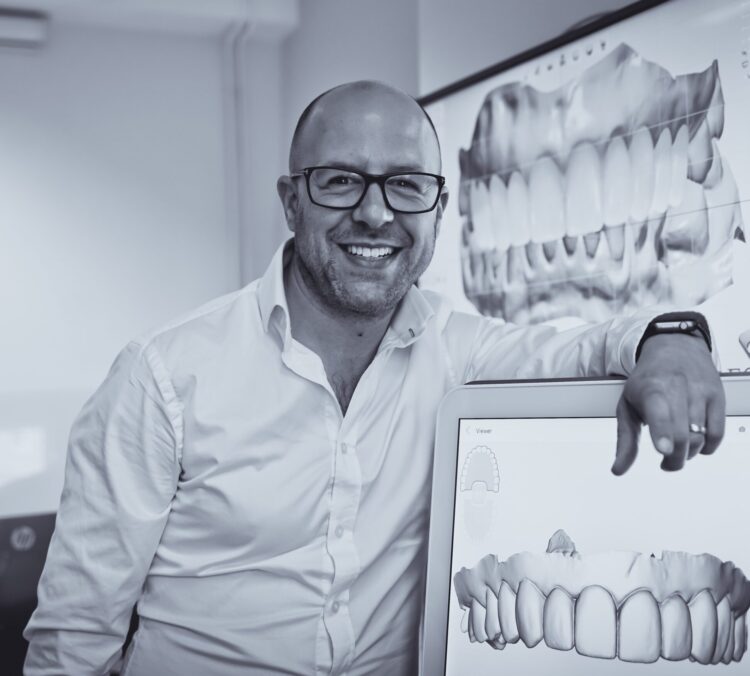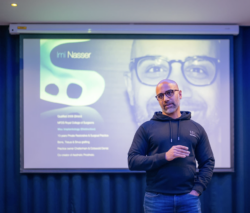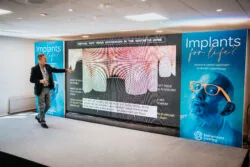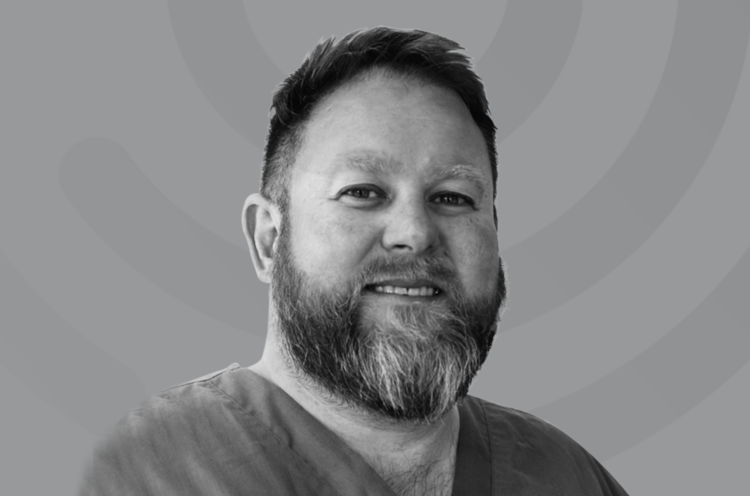An introduction to digital implant dentistry
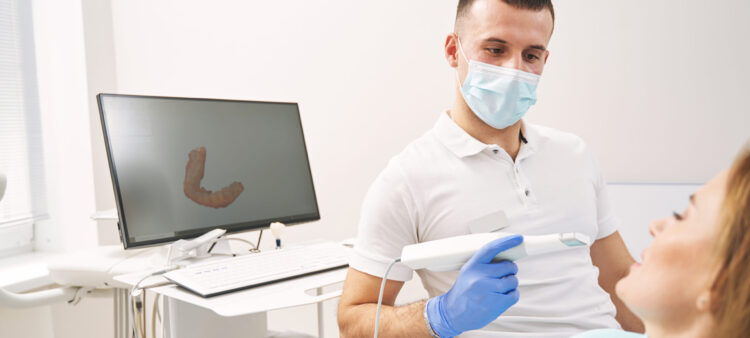
Marcos White discusses the role of end-to-end digital workflows to visualise, consent and plan implant treatment such that the surgical and restorative aspects can then be executed in a guided and predictable manner.
If you’re already carrying out implant dentistry, you probably already have the skills, the personnel, and the patience to carry out plenty of implant dentistry. But what if I told you that it can be made more efficient and more predictable, with greater consent and a greater patient experience.
Having had vast experience in placing and completing approximately 3,500 to 4,000 implants during my career, 50 to 70% of those have been digitally restored. Why? Because I truly believe this approach gives the clinician a much greater appreciation and visualisation of each step that happens throughout the treatment pathway.
The digital process isn’t just the hi-tech equipment within our surgery, it’s everything from an iPhone to a CBCT, to the way you communicate with your patients on WhatsApp. Digital dentistry helps to inform patients of the different options available to them, so that they don’t just have to imagine an outcome. Black and white words are no longer enough to record that you gave the patient options, because how could they visualise those options? How could they know what they were going to look like or how you’re going to deliver the treatment? Essentially, digital dentistry makes what clinicians do easier and more efficient.
Begin with the end in mind
Quite frankly, if you don’t keep up with the advancements of digital dentistry and the innovative technology, you’ll be leaving your patients and yourself in a worse position – and you’ll be left behind.
Digital consent is the idea of showing the patient visually what you’re going to do before you do it.
For example, if you were to buy a new kitchen or undergo a house renovation, you’d expect to see a 3D image and plan of the build on-screen before you even let the builders step foot in your house. It’s the same concept with implant dentistry.
I’m of the opinion that implant dentistry is the most complex field you can practise in dentistry. The combination of surgery, restorative, digital, and treatment planning makes it the greatest problem-solving exercise in dentistry. As a profession, we love solving problems so we should be using digital to lean in and help solve any challenges we face.
As a result of implant dentistry originally being devised by surgeons, the surgery and placement aspects initially became the focus, and the restoration often became an afterthought. This led to many anaesthetic implant results and much remedial treatment and litigation. Thankfully, the profession recognised that if we started from a restorative vision first and reverse engineered where the implant should go, we would get much better outcomes – and this is where digital can help. It is therefore critical that modern day implant dentistry begins with the end in mind.
Through digital design, we can visualise for ourselves and the patient exactly what we’re going to deliver and then by using 3D printing and templates, we can supply that. Essentially, the principles of digital implant dentistry are a commitment to digital design, planning, consent, guidance and restoration with end-to-end digital workflows.
Digital workflow efficiency
A workflow can be described as an instruction manual or a process of a system and algorithm. If you follow a set of processes, you’ll get the same outcome, which in turn gives both the dentist and the patient confidence. If you show patients a workflow that you’ve used 100 times over to get the same result, they’ll know that they are in capable hands because you’re following a tried and tested plan that gets results.
At the consultation stage of the workflow, the set protocol is we’re going to take intraoral scans, a full-face photo, and create an aspirational smile image. We can now use it to create an idealised image on a patient’s face in an instant without the need for any skillset or technique. They help create an aspiration limit, to help guide us in what might be an ideal digital design for the patient.
At the digital design stage, I send the scans with comments of what I think the aesthetic outcome should look like to the digital designer. The design which comes back is approved and then shown to the patient for approval. This is the first part of the consent process. Based on that approval, a 3D printed model is produced which will become a restorative guide for the dentist.
In the majority of case studies, patient surgery takes only 10 to 20% of the time, which further demonstrates how influential digital dentistry is in those outcomes. The digital mock-up helps give the patient ideas of what can be achieved for them – because the reality is most patients don’t come in wanting an implant, they want a better smile. Do they want to replicate either what they already had, or even the tooth next door? It is through digital design that we can visualise that exploration and visualise the outcome digitally before doing anything else. And through that, the patient understands what we’re talking about in a way that is harder to do just with words.
Ultimately digital dentistry is about regaining control. It enhances you as a dental professional in terms of planning, consent and execution and improves outcomes in a way you could not achieve alone. It elevates your dentistry to a new level, which results in increased confidence for both you and the patient.

